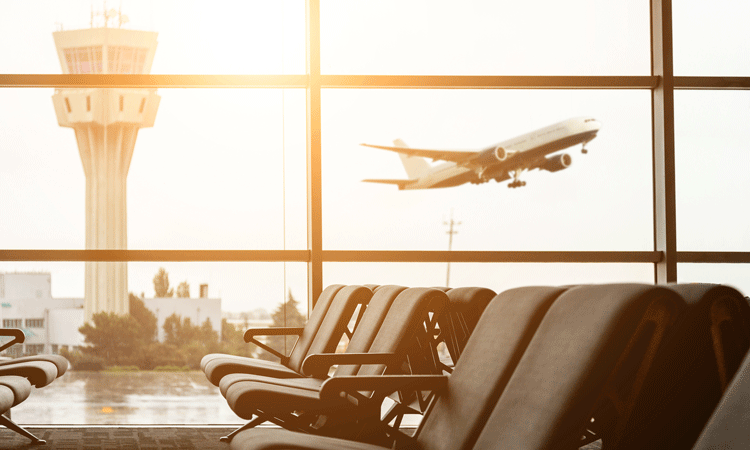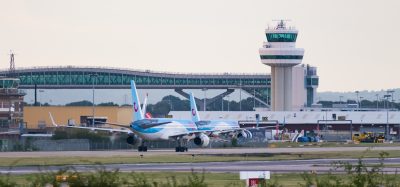Positive and immediate impact on global air travel as restrictions relax
- Like
- Digg
- Del
- Tumblr
- VKontakte
- Buffer
- Love This
- Odnoklassniki
- Meneame
- Blogger
- Amazon
- Yahoo Mail
- Gmail
- AOL
- Newsvine
- HackerNews
- Evernote
- MySpace
- Mail.ru
- Viadeo
- Line
- Comments
- Yummly
- SMS
- Viber
- Telegram
- Subscribe
- Skype
- Facebook Messenger
- Kakao
- LiveJournal
- Yammer
- Edgar
- Fintel
- Mix
- Instapaper
- Copy Link
Posted: 4 July 2022 | International Airport Review | No comments yet
Airports Council International World has released its quarterly assessment which has examined the impact of the COVID-19 pandemic and how airports must expect a positive and immediate impact on global air travel demand.


Airports Council International (ACI World) has published its quarterly assessment analysing the impact of the COVID-19 pandemic on airports, revealing a positive and immediate impact on global air travel demand.
The recent momentum created by the lifting of many health measures and the relaxation of most travel restrictions in many European countries and in the Americas has renewed industry optimism. It however exposed even more the uneven recovery as major aviation markets in Asia-Pacific lag behind their Western counterparts as they continue to be in part closed to international traffic.
Airport traffic recovery
There is positive news on this front as global passenger traffic is expected to improve significantly in 2022 reaching 77 per cent of what it was in 2019, with traffic for 2022 forecast to total 7.1 billion.
For the full year 2021, the COVID-19 outbreak removed 4.6 billion passengers compared to 2019, representing a loss of 50.3 per cent of global passenger traffic. Over the first two years of the pandemic, the COVID-19 outbreak reduced the number of passengers at the world’s airports by 10.2 billion.
TAKE A READ:
Aviation’s sustainable future: Transforming commitment into action by Juliana Scavuzzi | Senior Manager Environment | Airports Council International (ACI) World
ACI World Director General Luis Felipe de Oliveira commented: “Considering my recent trips and based on the latest data, there is no doubt that many travellers are eager to resume travelling and the early summer volumes are a testament to it. With the combination of ‘vacation deprivation’ and an upsurge in confidence in air travel provided by increased vaccination rates and safety measures, the relaxation of travel restrictions will help boost the propensity for air travel and fuel the industry’s recovery. With many countries taking steps towards the return to a certain normality, lifting almost all the health measures and travel restrictions, we expect a jump in air travel demand in the second half of 2022.”
Uncertainties remain
Even with the current traffic trends, much uncertainty still surrounds the recovery of the aviation industry, especially in the medium to long term. While many indicators are pointing towards the recovery, the industry is also facing some significant headwinds including geopolitical conflicts, higher inflation, the risk of economic downturn, supply chain disruptions, labour shortages and potential new outbreaks. Despite the downside risks, the industry remains confident that the potential for a recovery to 2019 levels within two or three years is foreseeable.
While some markets have experienced a robust recovery, on average and under the current projection, accounting for the slower than expected first quarter of 2022 due to the Omicron wave, global passenger traffic is expected to reach back to 2019 levels in late 2023 with the full-year recovery to 2019 levels in 2024.
The overall recovery will mainly be driven by the recovery of domestic passenger traffic but will be hampered by the recovery stagnation in Asia-Pacific and a slower recovery in global international travel (globally, domestic traffic accounted for 58 per cent of total passenger traffic in 2019). Global domestic passenger traffic is still expected to reach 2019 levels in late 2023 with full-year 2023 traffic at par with 2019 levels. However, global international passenger traffic will require almost one more year to recover and is forecast to reach 2019 levels only by the second half of 2024.
Related topics
Air traffic control/management (ATC/ATM), Airside operations, COVID-19, Economy, Passenger experience and seamless travel, Passenger volumes, Terminal operations
Related organisations
Related regions
Asia Pacific and Oceania, Central and South America, Europe, North America


















